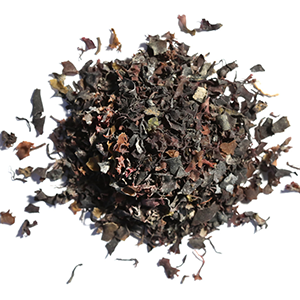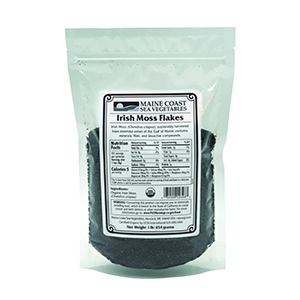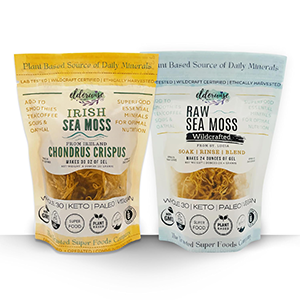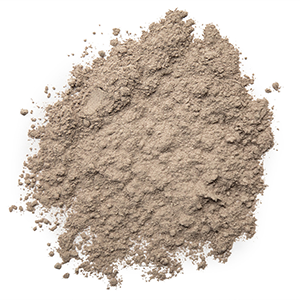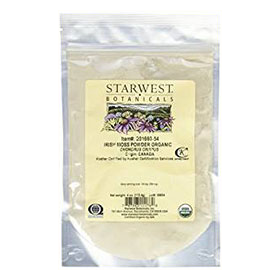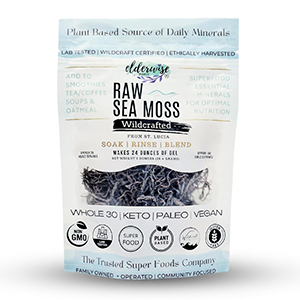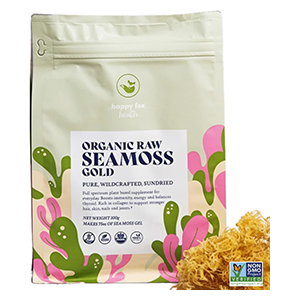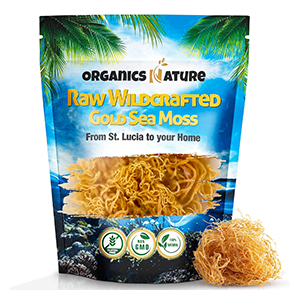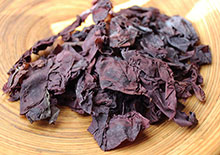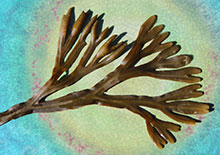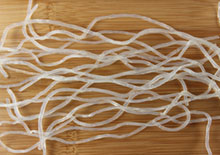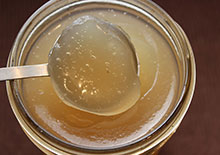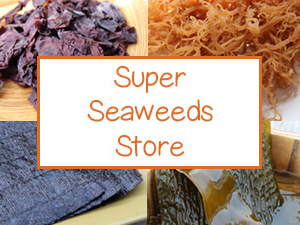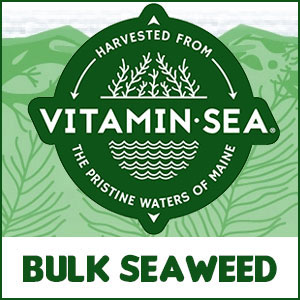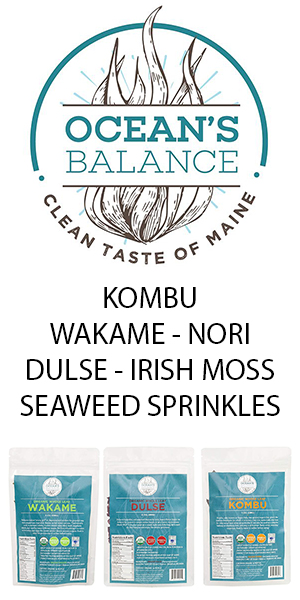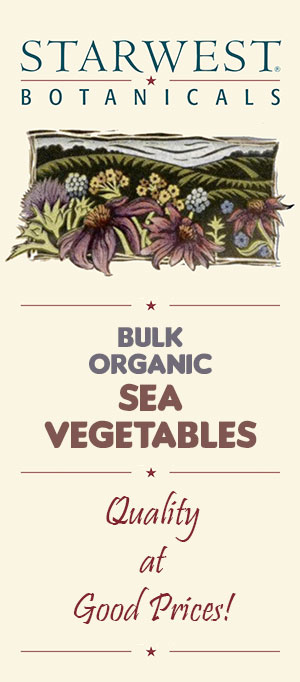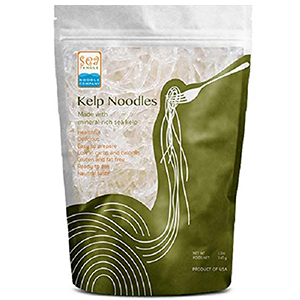Sea Moss Benefits | Trending Uses & Honest Review
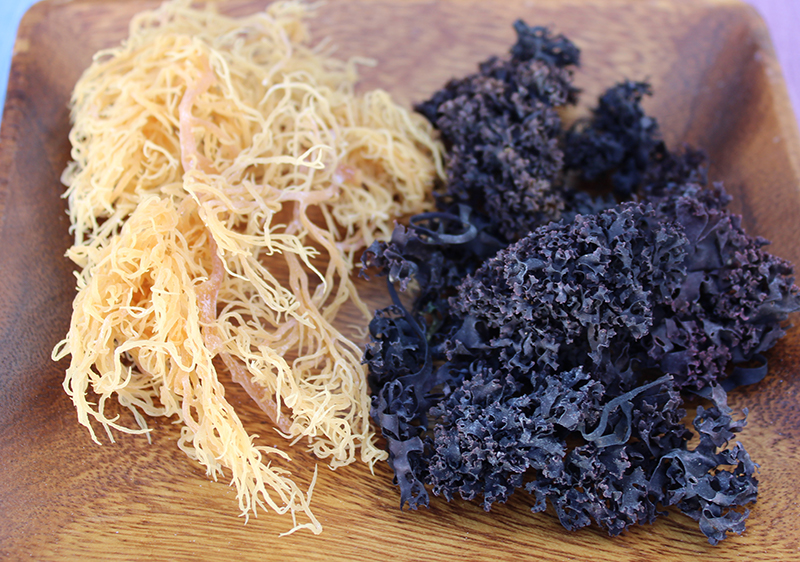
Way back in 2016 when we first wrote about this seaweed, the sea moss that is so popular today was identified using the umbrella term "Irish moss" in many wellness-seeking communities. The name "sea moss" was rarely used.
Nowadays, all types are generally referred to as "sea moss" and though they can come from different "red marine algae", their properties as thickening agents are quite similar due to either a high carrageenan or agar content.
According to our research, the sea moss that has become especially trendy today comes from the genus Gracilaria, the golden beige variety. However, Kappaphycus alvarezii and the much darker leafier traditional Irish moss species known as Chondrus crispus are also marketed as "sea moss" to a smaller degree.
How Do You Use Sea Moss
Table of Contents
Intro | How to Use | Sea Moss Benefits | Species Confusion | Honest Review | Precautions | Shop
Since this seaweed type isn't exactly edible in its fresh or dried form, it must be further processed. While we wouldn't personally use sea moss as a powder, gummy or extract, some may prefer the convenience.
In our opinion, the absolute best "whole food" approach would be to make a homemade sea moss gel using the soaked dried seaweed. Gracilaria gel has more of a neutral flavor whereas Chondrus gel has a stronger seaweedy taste and aroma. Both usually camouflage well when combined with other foods.
Making a GEL, which is basically soaked and blended whole sea moss, has been the standard way to utilize it since the early days when it was popular for adding texture to vegan cheese and raw nut-based desserts like puddings, custards, cheesecakes, pies and ice cream.
Currently, it has become a trendy dietary addition to morning shakes, smoothies and even coffee for some of these top nutritional sea moss benefits.
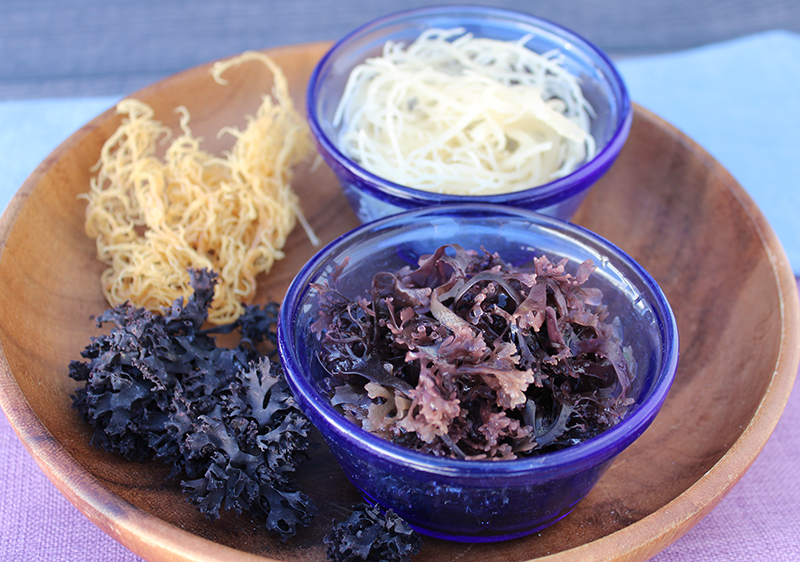
6 Sea Moss Benefits
1) Prebiotic for Gut Health
As mentioned, sea moss isn't typically consumed like other seaweeds such as dulse, nori or sea lettuce. This is due to its rubbery inedible texture as well as very mucilaginous nature which is apparent when soaked and blended.
Sea moss can be a beneficial edible seaweed gel to add to smoothies or protein shakes to provide a PREBIOTIC FIBER via its long-chain sugars known as POLYSACCHARIDES. With similar properties to that of aloe vera gel, it is a noteworthy option for improving and/or maintaining overall gut health and bowel regularity.
Soup broths made from simmered whole Irish moss seaweed have been used for centuries in Ireland, offering a soothing and lubricating influence on the mucous membranes of the stomach and intestines.
In some folk traditions, it is believed to help relieve gastritis and ulcerative conditions of the digestive tract.
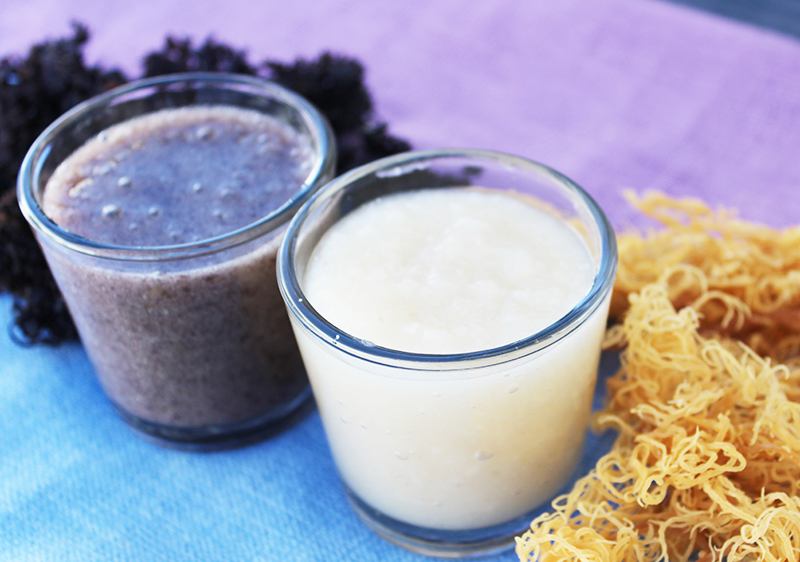
2) "Marine Collagen" for the Skin and Joints
One of sea mosses' great benefits is as a skin beautifier for both internal and external use.
Often called "marine collagen", not because it actually contains collagen, but because its gelatinous properties work in a similar manner.
Gracilaria sea moss is the main source of AGAR, a common alternative to animal-derived gelatin sources. (*)
This is also why sea mosses are often used as a base in vegan "bone broth" recipes.
These polysaccharides act as natural anti-inflammatory agents offering a cooling and strengthening influence to connective tissues. The gel can be consumed in blended drinks before or after exercise or as nutritional sustenance for sports injuries.
Likewise, sea moss is known to contain sulfur-based amino acids like TAURINE as well as sulfated polysaccharides (whether agar or carrageenan based). Dietary SULFUR can help to protect the integrity of the joints.
As a supplementary adjunct, along with MSM, morinda root and eucommia bark, it can be useful for joint support and maintenance.
3) Useful as a Respiratory Tonic
Sea moss became especially popular in 2020 when health seekers were looking for ways to naturally fortify the respiratory system.
The Chondrus crispus species has been long utilized in Northern coastal environments such as Ireland where is grows prolifically. Historically, prepared heated broths have been considered both a demulcent and expectorant for sore throats, coughs, congestion and for expelling excess mucus from the lungs.
According to seaweed expert Ryan Drum, "Red algae containing carrageenan have been used for millennia as treatments for respiratory ailments, especially intractable sinus infections and lingering pneumonia." (*)

4) Sea Moss Benefits, Jamaican Aphrodisiac
In Jamaica, it has a reputation for being an aphrodisiac and is considered supportive for male libido and vigor.
Jamaicans serve it as a thick, sweet milky drink spiced with vanilla, nutmeg and cinnamon. It is sold canned as "Irish Moss" not because it comes from the Chondrus species, but is reminiscent of Irish immigrants who settled in Jamaica.
Although inaccurate, the term "Irish moss" is still used today to describe the native Gracilaria species. Dr. Sebi, one of the earlier promoters of Jamaican sea moss, also mistakenly confused the Gracilaria
and Chondrus species probably for similar reasons.
5) Sea Moss Nutrition
Both sea moss varieties are most beneficial for their high long-chain polysaccharide content, but are also a source of some polyunsaturated fatty acids, protein and minerals.
Irish moss (Chondrus crispus) has been utilized by the people of the North Atlantic regions for many centuries. Commonly utilized fresh with other seaweeds on Irish coastlines as a nourishing soup to nutritionally fortify the diet.
Many in fact offered life-sustaining nourishment throughout historical food shortages like the Irish Potato Famine.
In our opinion the Chondrus crispus species, which usually grows in colder nutrient-dense waters, is going to have a greater nutritional profile than the Gracilaria types.
We noticed that it is commonly stated over and over online that sea moss contains "92 essential nutrients" as part of marketing promotions. But, in all honesty, we feel if you're looking for a seaweed that's packed full of nutrients like trace minerals we would choose other varieties.
While Chondrus sea moss can be high in IODINE, generally Gracilaria types are NOT compared to that of kelp, bladderwrack and other sea vegetables.
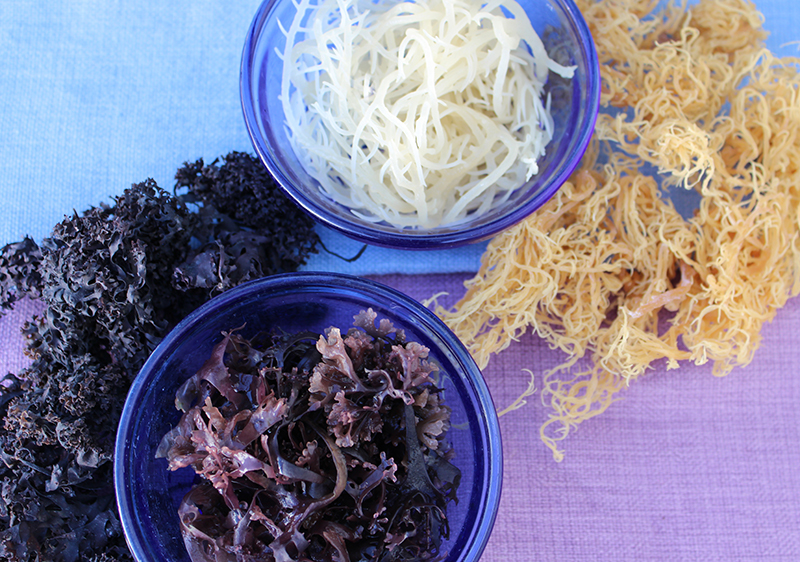
6) Sea Moss for Weight Loss
Because sea moss is low in calories and high in mucilaginous polysaccharide fiber it is often considered beneficial for those on weight loss protocols.
We would somewhat agree with this as it does two things in this regard. One, it encourages bowel regularity and two promotes a feeling of fullness. The seaweed is also a "time released" energizing fuel source, providing long chain polysaccharides that help to slowly deliver trace nutrients.
In our view, sea moss is least effective as a gummy, powder or capsule because, like psyllium husk, it soaks up water content which can easily dehydrate and constipate the gut.
Homemade gels are simply the best and most effective from our perspective.
Confusion About Sea Moss Species
Over the years there has been a lot of confusion about sea moss and its species source. There are several reasons for this. One being the intersection of the Irish and Jamaican cultures.
Essentially, for a long time, Irish moss (Chondrus crispus) and the Caribbean variety Gracilaria were often considered to be composed of the same polysaccharide compounds, the main one being CARRAGEENAN.
Yes, while these types are both sea mosses, Chondrus crispus comes from cool marine waters whereas the edible Gracilaria species utilized as sea moss come from warmer oceans of the Western Pacific. They, in fact, look a lot different.
We did discuss this in our original content published in 2016, but as we delved deeper into current research it turns out that most Gracilaria don't even contain carrageenan as the main polysaccharide.
They contain AGAROSE and AGAROPECTIN
in the form of AGAR, although some online sources still parrot that they are a source of carrageenan. The Gracilaria species is one of the two red algaes used to make agar-agar, utilized industrially as a gelling and thickening agent.
There is another type of sea moss Kappaphycus alvarezii (also called elkhorn sea moss) which grows in warmer marine environments like the Caribbean, Hawaii, Vietnam and Guam. It does look very similar to the Gracilaria species commonly sold online as "sea moss". Kappaphycus alvarezii does however contain carrageenan as its main polysaccharide and is the #1 food industry source of carrageenan.
All of this information is just something to keep in mind if you are new to consuming it and would prefer one polysaccharide nutrient over another.
An Honest Review as a Dietary Seaweed
Gracilaria sea moss are fast-growing species which therefore make them valuable sources for the sea moss gel and supplement industry. This is the main Genus utilized for such purposes according to several online brands we reached out to.
In recent years, we noticed that many suppliers especially in the Caribbean and the coastal regions of St. Lucia are jumping on the sea moss bandwagon, harvesting and selling dried whole seaweed online.
Since it grows in abundance there and is easy to wildcraft, it can make a lucrative business enterprise. This is great for local communities but it also makes it vulnerable to advertising schemes.
We personally don't believe all the social media marketing and hype surrounding it as the latest and greatest superfood.
Yes, the freshly made gel can be a valuable addition to a healthy diet and lifestyle protocol, but it should not replace other high fiber food sources in the diet long term. Not to mention the question of whether or not daily consumption of these gels is even a good idea.
Precautions:
It is very important that seaweeds like sea moss come from trusted sources that test for contaminants like heavy metals and other pollutants which can tend to concentrate in sea water. Excessive amounts of sea moss may cause nausea and/or loose stools. Seek the advice of a healthcare professional if pregnant, nursing, taking any medications, if you have thyroid issues or a serious health condition.
Shop Related Products (About Affiliates & Amazon Associate Paid Links)
Affiliate Disclaimer: This section contains affiliate product links. If you make a purchase through our recommended links, we receive a small commission at no additional cost to you. Thanks for the support.
